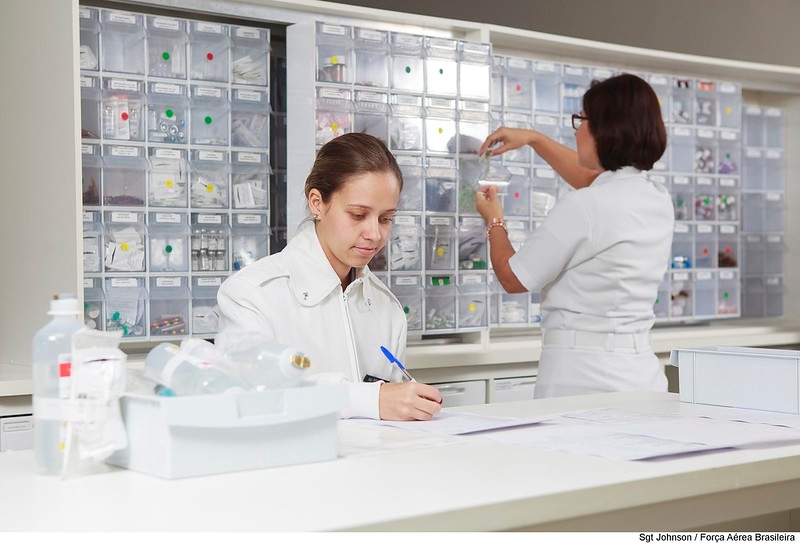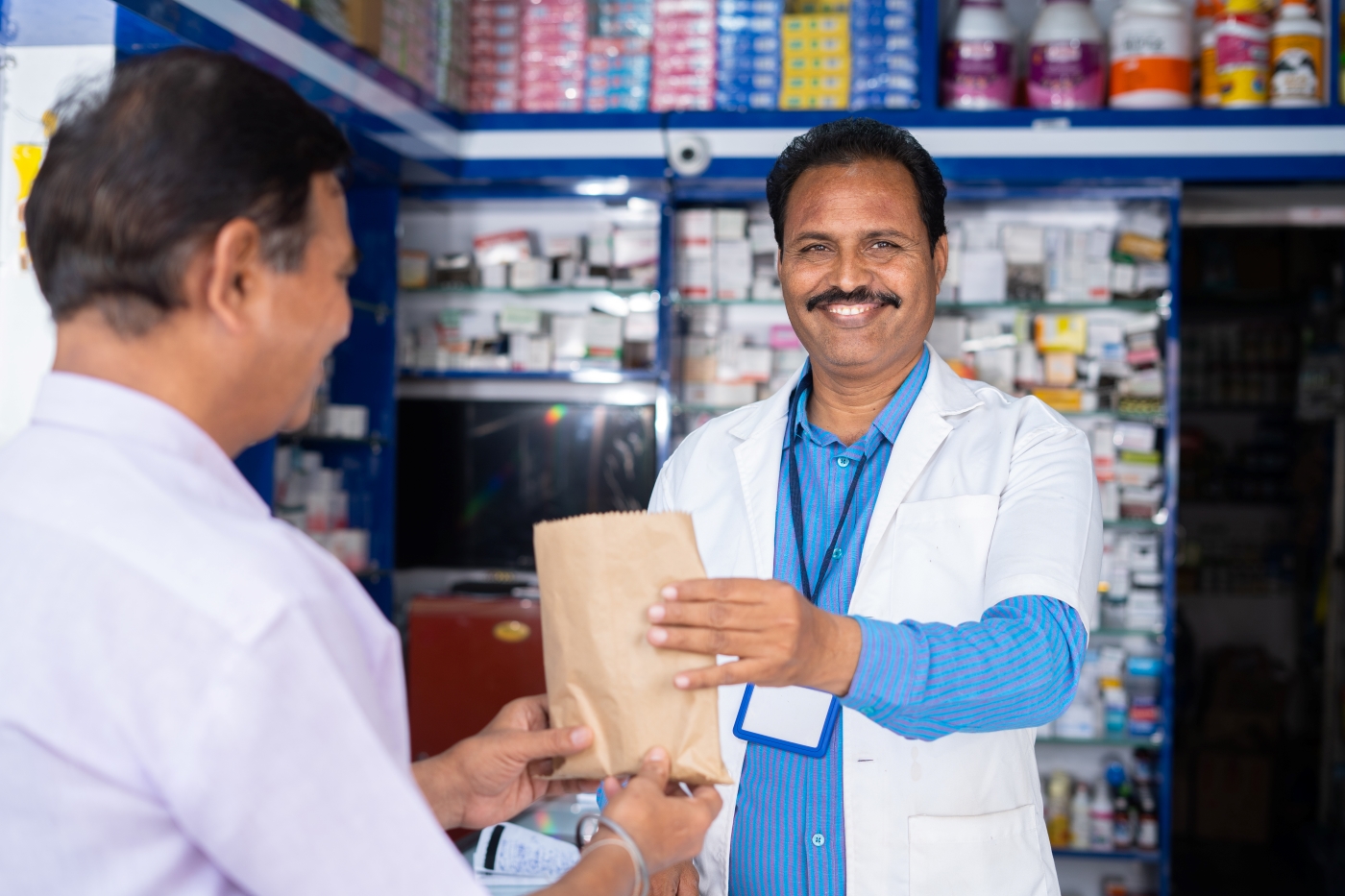Recommended
Today we launched two country case studies examining policy proposals to improve antimicrobial procurement in India and Brazil (versão em português). These studies are outputs of CGD’s working group on antimicrobial procurement in low- and middle-income countries (LMICs), which is developing recommendations to expand access to antimicrobials, ensure these drugs are protected from unnecessary use, and facilitate research and development of new products that take into account the needs of LMICs. As highlighted in the landscape review we published last year, there is a dearth of research on procurement models suitable for LMICs. Fewer than 10 percent of the papers identified focus exclusively on LMICs, and papers are much less likely to have an LMIC-based author.
To address this problem, we commissioned two case studies to take stock of antimicrobial procurement in India and Brazil and propose policy recommendations. These efforts were led by the Indian School of Business and INCAE Business School, respectively, and involved a combination of extensive desk research and interviews. (A third case study in Kenya, led by KEMRI-Wellcome Trust, is forthcoming.) We selected India and Brazil, in part, because of the large burden of antimicrobial resistance (AMR) in those countries: 300,000 and 33,000 people die of drug resistant infections in India and Brazil every year. This represents 2.3 and 1.8 percent of all fatalities, in these two countries respectively. In addition, both India and Brazil have large pharmaceutical markets (estimated at 15.1 and 3.8 percent of the global market by value, respectively), and are the largest and fourth largest importers of antibiotics. India is also the world’s fourth largest exporter of antibiotics, at 7.6 percent of global exports.
Three main takeaways
Policymakers aren’t engaged enough to make National Action Plans work
Both India and Brazil have a National Action Plan (NAP) for AMR, but these plans don’t explicitly focus on the procurement of antimicrobials as a lever to increase access, improve stewardship, and spur innovation. Neither country has implemented its national plan in full, and acceptance at the state level remains low (only four Indian states have state action plans). The interviews and analysis conducted for the two case studies suggest that policymakers are often unaware of data on the scale of resistance and burden of diseases, and do not effectively incorporate this data into their decision-making.
Decentralized procurement presents challenges
In both countries, state and local governments shoulder a significant portion of health procurement, and face challenges including fragmentation and coordination. In Brazil, national entities set forth a list of approved drugs, but states and municipalities have the discretion to supplement this list and purchase additional medications for their communities. Similarly, in India, health is a state responsibility and state governments are responsible for the procurement process for public facilities. The decentralized and limited nature of public procurement diminishes overall bargaining strength, especially for Reserve antimicrobials (drugs that the WHO recommends should only be used as a last resort). State medical stores corporations operating independently and with limited collaboration often resort to procuring these drugs in an ad hoc manner, resulting in sky-high prices, when available. Furthermore, smaller Indian private sector hospitals generate low volumes of demand for these antimicrobials, which renders procurement not only challenging but also expensive. Reserve and Watch category drugs (drugs that the WHO recommend should receive greater protection from overuse) cost over 32 and 9 times more, respectively, than Access category drugs (drugs that should be used most widely).
Market size is insufficient to overcome barriers to rollout of some antimicrobials
India and Brazil both face barriers to accessing Reserve antibiotics; in India, more than half the states have only one or no Reserve category antimicrobials listed in their essential drug list. This is in part because market sizes and incentives in these countries are often seen as insufficient to encourage pharmaceutical companies to register these antimicrobials. Challenges to registering antimicrobials in each country reduce the incentives for doing so. Demand is often very fragmented, particularly in India, with hospitals, states, and municipalities all purchasing drugs. To date, policymakers have not prioritized action to address this.
Many interviewees in both India and Brazil were either not aware of AMR or did not consider it a major challenge. Policymakers will need to understand the urgency of the AMR pandemic in order to advance solutions.
Recommendations
Although India and Brazil face similar challenges in terms of access, innovation, and stewardship of antimicrobials, politically palatable solutions vary substantially, reflecting the countries’ different political environments. For example, in Brazil, policymakers seemed enthusiastic about a system that could stimulate local production of antibiotics, especially as public Brazilian manufacturers supply the Brazilian national health system. In India, which is already a large manufacturer, this was not a concern. The context-specific recommendations also align with the need to build solutions onto existing health systems.
In both countries, we identified changes that are workable and politically palatable, and would meaningfully improve antimicrobial procurement and, by extension, improve health outcomes.
Recommendations to improve antimicrobial procurement in India
To combat AMR in India, we propose modifying procurement systems to improve access to important Watch and Reserve antimicrobials that treat critical priority pathogens in the Indian Priority Pathogen List, while also ensuring appropriate stewardship practices.
The first strategy focuses on modifying the National and State Action Plans to explicitly outline the guidelines for procurement of these antimicrobials. For example, regular procurement of these essential antimicrobials can be ensured by their inclusion in state drug procurement lists. States should coordinate with each other to reduce duplicative efforts and gain from economies of scale. For procurement of low-volume antimicrobials, alternate channels such as private aggregators should be considered. Crucially, policies to improve access should go hand-in-hand with policies to ensure stewardship. Hospitals should be encouraged to follow stewardship practices and be monitored using an assurance system that extends beyond simple accreditation programs. Diagnostic facilities should be improved, and surveillance of Watch and Reserve antimicrobials should be enhanced to prevent future resistance.
Recommendations to improve antimicrobial procurement in Brazil
In Brazil, we propose to leverage and modify existing infrastructure to expand access to critical antimicrobials, stimulate local manufacturing, and protect against overuse and inappropriate use. In particular, we propose to modify the Product Development Partnerships (PDPs) model, in use since 2009 for many antiretrovirals, anticancer, and immunosuppressant drugs, to increase access and stewardship to key high-cost antibiotics or ones available from a single supplier. Under a PDP, a pharmaceutical company gradually transfers the technology and production of a health product to a Brazilian public laboratory over the course of 10 years. The products are then purchased by the Ministry of Health and sold through the Sistema Único de Saúde (SUS)—Brazil’s universal health coverage provided to all citizens. The PDP model promotes antimicrobial access, supports cost reduction, and enhances national capacity for innovation through technology transfer. This model is a largely untapped opportunity for the antimicrobial market, as there is only one PDP for an antimicrobial.
The proposed model—the annual fee PDP—would also delink profit from volume of sales to protect against incentives to oversell health products. Rather than the traditional per-unit payment structure, the annual-fee PDP would entail a fixed annual sum independent of the number of units purchased. Familiarity with the traditional PDP model among Brazilian health stakeholders could aid the implementation of the access fee PDP. Products produced through access fee PDPs could be procured at the national, regional, or global level, depending on the interest of stakeholders in Brazil, the Americas, and around the world.
Reflections
Antimicrobial resistance is a major killer in both India and Brazil. We hope that these two studies provide a useful path forward for policymakers in both countries. There are many—often small—changes that could greatly improve people’s access to effective antimicrobials that we hope governments will look to implement.
Disclaimer
CGD blog posts reflect the views of the authors, drawing on prior research and experience in their areas of expertise. CGD is a nonpartisan, independent organization and does not take institutional positions.
Image credit for social media/web: Adobe Stock







